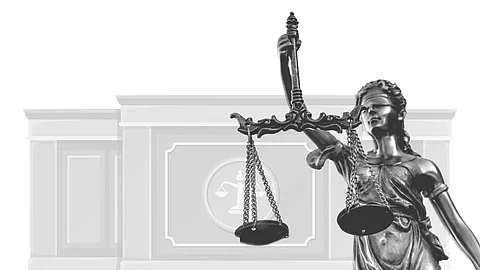

SOMETIMES, THE WISEST THING in a courtroom isn’t a sharp question, or a powerful statement from either side. It is knowing which words were left unsaid — but were still profound. Because a judge’s words do not just decide cases; they can echo far beyond the courtrooms where they were spoken.
Oral observations made by a judge while presiding over cases can sometimes reveal the contours of the judge’s own thinkings, and beliefs. Yet, these remarks, especially if picked up by the media, can sometimes create unintentional public narratives that overshadow the actual legal merits of a case.
In the age of instant news, where “Breaking News” often “outruns the true understanding of the issue that’s adjudicated by the bench,” such comments are sometimes reported without full legal context. Ironically, the media’s amplification can magnify their impact far beyond what the judge intended.
In a recent matter, when Justice Dipankar Datta questioned the patriotism of Mr. Gandhi, the exchange quickly entered the public discourse, sparked debate well outside the courtroom, far away from the issue decided. In fact, the Bench accepted Mr. Gandhi’s counsel’s contention that the Lucknow Magistrate could not take cognisance of an offence without hearing Gandhi. Yet, it could not resist making “casual observations” such as:
“How do you know that 2000 sq. km was acquired by China? What is the credible material? A true Indian would not say this. When there is a conflict at the border, can you say such things? Why can’t you ask these questions in Parliament?”
None of these points were actually before the Bench for adjudication.
This is not about questioning the judicial authority, which remains absolute in its domain. It is about judicial optics. The words of a judge carry both legal weight, and public influence. Even a casual observation, or a passing remark, if reported widely, can become the headline rather than the footnote, and sometimes shape public perceptions before a verdict is even delivered.
I still remember a conversation at an airport in Gujarat last week with a medical doctor. She asked about my profession. When I told her I had been a journalist, later a university faculty member, and now a practising advocate who still writes, she paused and said, “You are living three lives in one life.”
Her words defined something that I always cherished but never realised in that sense. Perhaps because they mirrored something deeper in me that each role I have lived has sharpened my instinct to see both the visible and the unseen, to listen for what is said and for what is withheld. And in that recognition lies a truth that applies to all who bear the weight of public words, i.e. we are, in some sense, always holding a mirror to ourselves, even when we believe we are only addressing the other.
From that stand point, it’s clear that when a judge exercises restraint, public trust in the judiciary grows stronger.
When a judge’s oral observations remain measured and precise, the focus stays exactly where it belongs i.e. on the facts, the law, and the final judgment.
And when the media resists amplifying offhand remarks made by the Bench, it safeguards the sanctity of the judicial process from becoming a public theatre.
Restraint for judges is not silence. It is discipline. It is “an art of speaking only that which serves the justice”, and withholding anything that might sway it.
In a time when every word can travel from the courtrooms to the millions of screens in minutes, this discipline is not merely desirable, it is essential.
The Supreme Court of India has, on multiple occasions, reminded the judiciary to maintain dignity, and restraint in language while presiding over cases.
These reminders are not ceremonial niceties. They are the safeguards for protecting both the dignity of the Bench, as well as the fairness of the process.
In the end, it is simple. Justice speaks loudest when it speaks only what is needed. A judge who knows when to hold back isn’t being quiet for him. He’s being wise. And sometimes, the pause between the words is where the real truth stands.